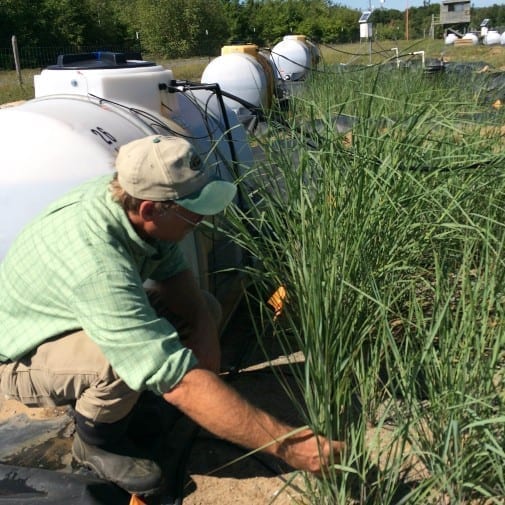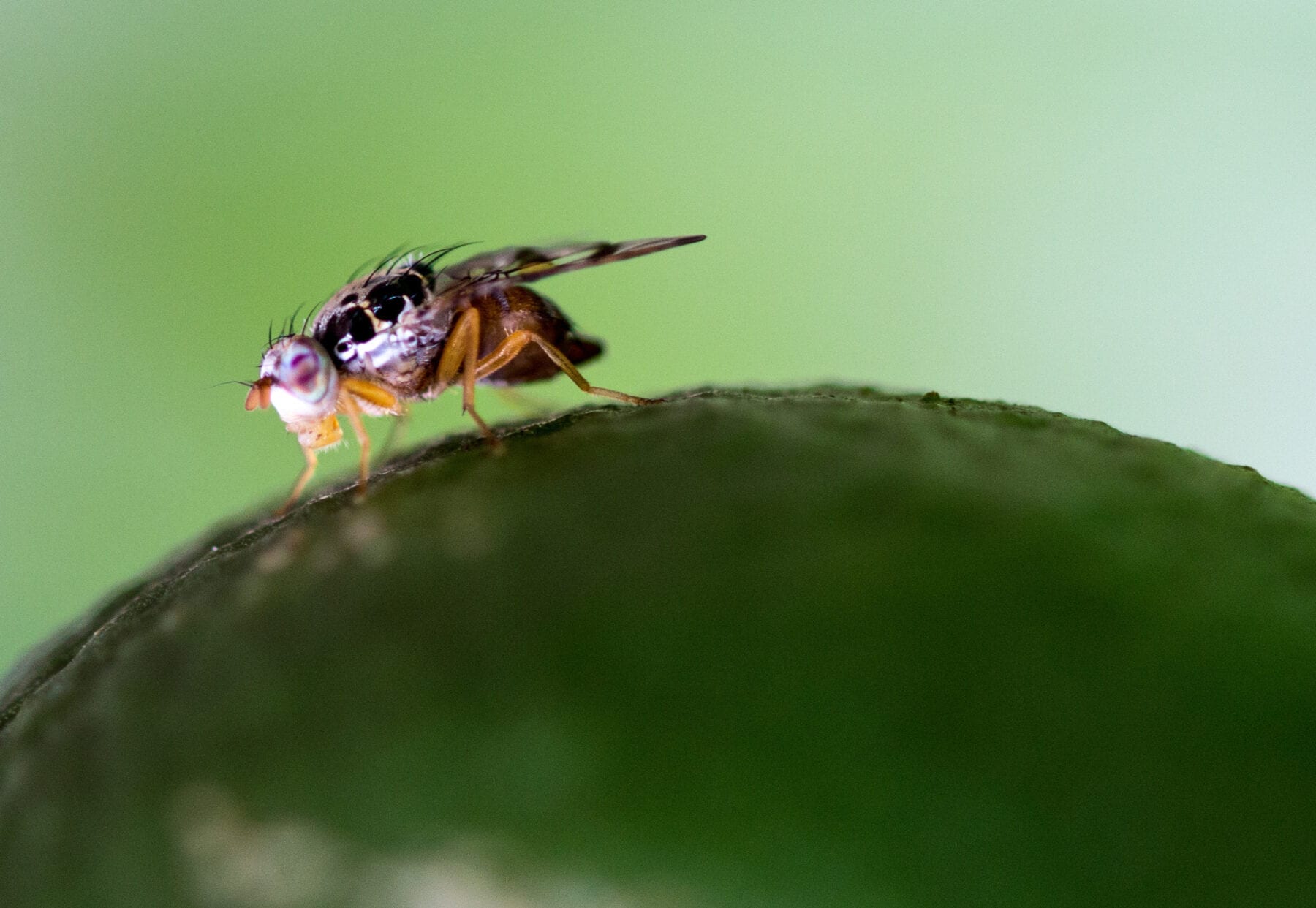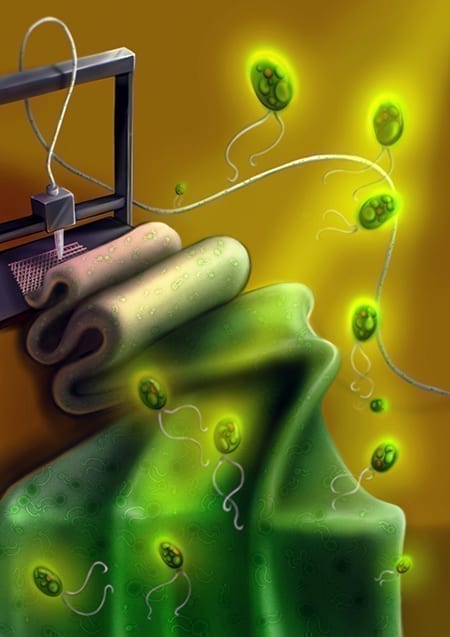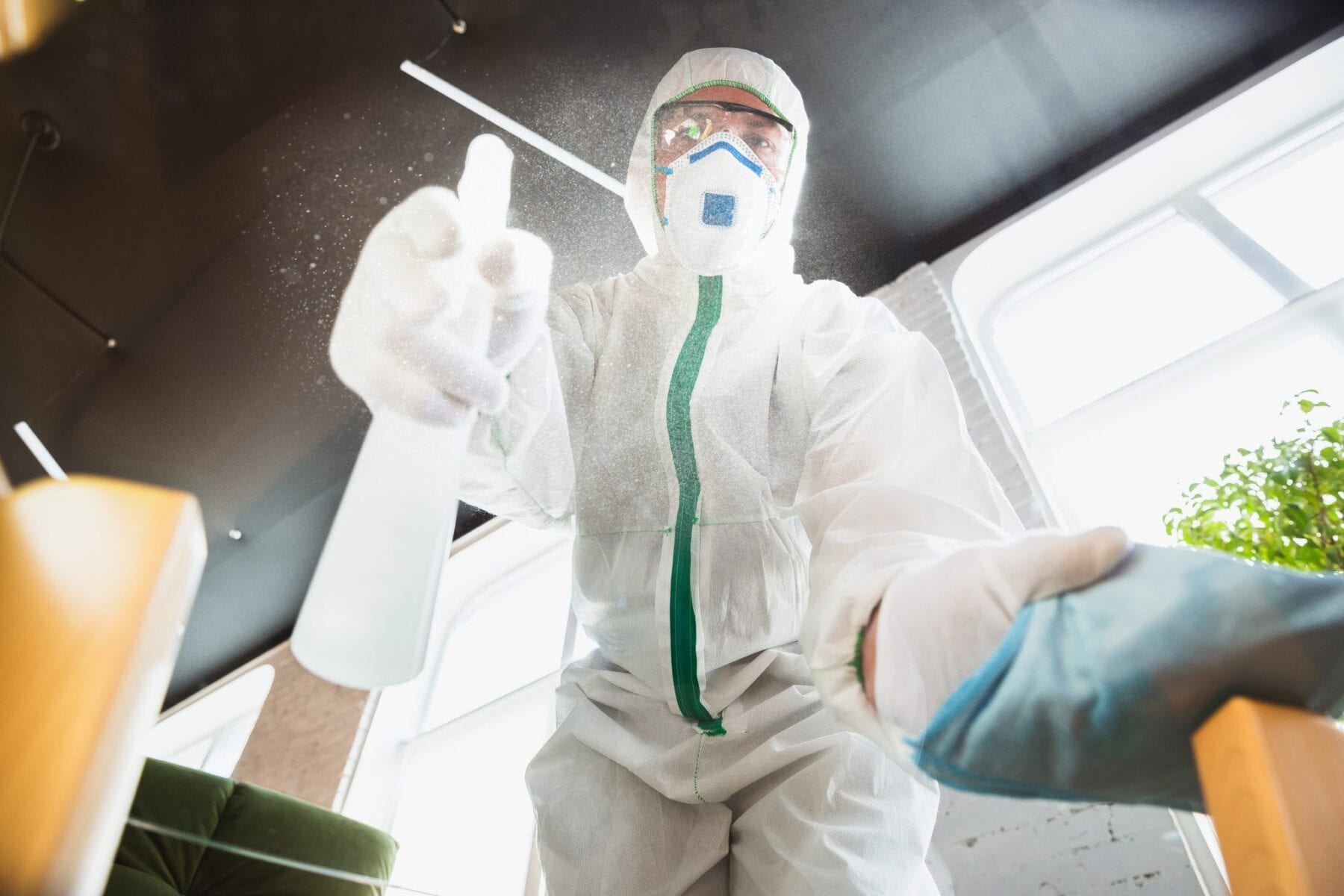
Researchers sampling the switchgrass Credit: Neil Bruce
A grass commonly used to fight soil erosion has been genetically modified to successfully remove toxic chemicals left in the ground from munitions that are dangerous to human health, new research shows.
The study – led by the University of York – demonstrates that genetically modified switchgrass (Panicum virgatum) can detoxify residues of the military explosive, RDX, left behind on live-fire training ranges, munitions dumps and minefields.
RDX has been a major component of munitions since WW2 which are still used extensively on military training grounds. This use has now resulted in widespread pollution of groundwater.
Researchers generated the plants by inserting two genes from bacteria able to breakdown RDX. The plants were then grown in RDX contaminated soil on a US military site. The genetically modified grass grew well and successfully degraded RDX to non-detectable levels in their plant tissues.
Pollutants
Study authors, Professor Neil Bruce from the Department of Biology and Director of the Centre for Novel Agricultural Products (CNAP) and Dr Liz Rylott, also from CNAP believe it is the first successful example of the use of a GM plant in-the-field to remove organic pollutants, which are resistant to environmental degradation.
Dr Rylott said: “The removal of the toxic RDX from training ranges is logistically challenging and there is currently a lack of cost-effective and sustainable solutions.
“Our research demonstrates how the expression, in switchgrass, of two bacterial genes that have evolved specifically to degrade RDX give the plants the ability to remove and metabolise RDX in the field at concentrations relevant to live fire military ranges.
“We demonstrated that by inserting these genes into switchgrass, the plant then had the ability to degrade RDX to non-detectable levels in the plant tissue.”
Contaminated
The study confirmed that the plants were able remove and degrade RDX at a rate of 27 kg RDX per hectare. RDX is designated as a priority pollutant by the US Environmental Protection Agency and is of significant and increasing public concern. In the US, over 10 million hectares of military land are contaminated with munitions components, of which, RDX is a major component.
Professor Bruce added: “The recalcitrance of RDX to degradation in the environment, combined with its high mobility through soil and groundwater, mean that plumes of toxic RDX continue to spread below these military sites, threatening drinking water supplies.”
The paper sites an example when in 1997, plumes of RDX pollution were discovered in both groundwater and the aquifer beneath the training range at the Massachusetts Military Reservation in Cape Cod. The aquifer is the sole source of drinking water for half a million people and resulted in the Environment Protection Agency preventing use of all live munitions during training at this site.
The study says that the continuing demand for vast amounts of military explosives means that RDX will continue to be manufactured and used globally on a massive scale for the foreseeable future.
Researchers said that because of the scale of explosives pollution, particularly on military training ranges, there is considerable interest in developing plant-based sustainable remediation strategies.
Original Article: GM grass cleanses soil of toxic pollutants left by military explosives, new research shows
More from: University of York
The Latest Updates from Bing News & Google News
Go deeper with Bing News on:
Genetically modified switchgrass
- Researchers develop genetic plant regeneration approach without the application of phytohormones
Advances in plant biotechnology can address the problems associated with food scarcity in the future by enabling the production of genetically modified (GM) plants with higher productivity and ...
- Genetically Modified Cell Wall Thickness Improves Photosynthetic Efficiency in the Field
An engineered increase in mesophyll conductance, by reducing the thickness of cell walls, results in improved photosynthetic efficiency.
- Genetically modified golden rice may yet succeed in the Philippines
Farmers in the Philippines may be able to continue growing golden rice genetically modified to combat malnutrition, despite a court decision revoking the permit for planting it. The Philippines ...
- genetically modified food
Consumers wanting to know if their foods contain genetically modified ingredients will be able to find out for the first time. Compromise for GMO food labeling rules struck in Senate Senators have ...
- Genetically Modified Organisms (GMOs): Transgenic Crops and Recombinant DNA Technology
In addition, genetically modified plants may someday be used to produce recombinant vaccines. In fact, the concept of an oral vaccine expressed in plants (fruits and vegetables) for direct ...
Go deeper with Google Headlines on:
Genetically modified switchgrass
[google_news title=”” keyword=”genetically modified switchgrass” num_posts=”5″ blurb_length=”0″ show_thumb=”left”]
Go deeper with Bing News on:
Degrading RDX
- New and used 2024 Acura RDX for sale near Turnersville, NJ
New One of the main reasons I was interested in the RDX was its safety ratings and features. I am very pleased with those features and warning, I think they work well. I like the way the RDX looks ...
- 2020 Acura RDX
The transmission is a[n] 10-Speed Automatic with all-wheel drive. How big is the 2020 Acura RDX Base Trim’s fuel tank? How efficient is a 2020 Acura RDX Base Trim? The 2020 Acura RDX Base Trim ...
- 2017 Acura RDX
The transmission is a[n] 6-Speed Automatic with all-wheel drive. How big is the 2017 Acura RDX Base Trim’s fuel tank? How efficient is a 2017 Acura RDX Base Trim? The 2017 Acura RDX Base Trim ...
- Redox Ltd RDX
Morningstar Quantitative Ratings for Stocks are generated using an algorithm that compares companies that are not under analyst coverage to peer companies that do receive analyst-driven ratings ...
- Used 2008 Acura RDX for sale near me
Never miss a car! Used RDX is an excellent vehicle, has been extremely reliable and cost efficient. At this point, don't need a SUV so downsizing and this RDX is looking for a new home.
Go deeper with Google Headlines on:
Degrading RDX
[google_news title=”” keyword=”degrading RDX” num_posts=”5″ blurb_length=”0″ show_thumb=”left”]










